SUMMARY
This is AI generated summarization, which may have errors. For context, always refer to the full article.
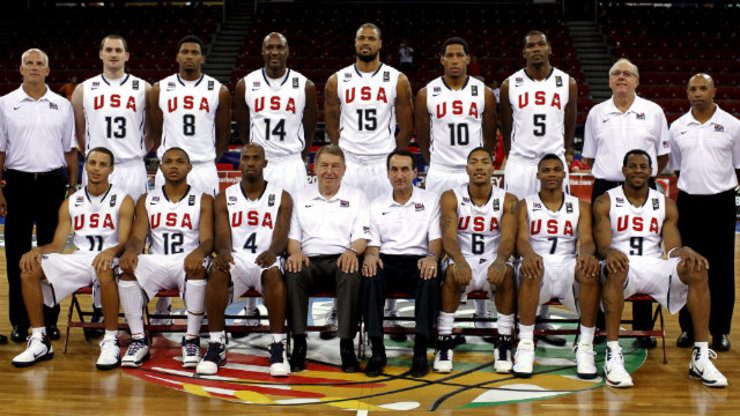
First, there was LaMarcus Aldridge withdrawing his name from consideration for the US team that will defend its title in the FIBA World Cup in Spain, keeping USA Basketball in the dark as to the real reason behind his pullout. Kawhi Leonard almost simultaneously called off his participation from the US team but for an understandable reason – his having had to play deep into June the past two seasons with the San Antonio Spurs’ two straight runs to the NBA finals.
This decision, he said, was born out of learning from the experience of two other teammates, Tony Parker and Manu Ginobili, who also kept active with their respective national teams the previous offseason and had to suffer for it with injuries.
Blake Griffin then followed suit, citing as reason a stress injury in his back that doctors said had not fully healed. Then, there was Russell Westbrook who said he needed to rest from the rigors of the previous NBA season.
But perhaps the three most jarring losses for the US team came after that.
Just before training camp opened last July 28, Kevin Love reluctantly gave up what was perceived as a surefire slot in the middle of uncertainties attending his status with the Minnesota Timberwolves, from whom he has asked to be traded.
Then, there was that gruesome injury that sent shock waves around the world as Paul George broke his right leg in two places in the first public scrimmage among Team USA candidates that was seen live on national TV last August 1.
(RELATED: How Paul George’s injury may affect international basketball)
Of course, the third was the withdrawal of Kevin Durant, expected to provide a major part of the Americans’ offense, due to physical and mental fatigue. The reigning NBA MVP’s decision, just after going through the first phase of training camp, was easy to deduce since an unmistakable burnout had slowly seeped in from the time he’s had to carry Oklahoma City at times by himself with the injuries that had plagued Westbrook and Serge Ibaka the last two years.
And the toll of withdrawals hasn’t been confined to Team USA either. Argentina, with Ginobili nursing a stress fracture in his right leg, will have to do in the Worlds without arguably the best player in its history. France, whose national squad Parker has led, will also be without the player that’s probably the greatest in its own annals in the coming Spain joust. Tony just decided he’s had it at this point after something like four straight years of playing for his country in the Olympics, the Worlds and the FIBA Europe competitions, making it three Spurs who would be out of their country’s teams in this year’s first World Cup of Basketball.
And let’s not forget, our own Gilas Pilipinas squad to Spain has also had its share of pullouts on account of injuries. Marcio Lassiter, after having been added to the Gilas pool of candidates earlier this year, had to decline his spot partly due to a nagging back problem caused by a fall he suffered the previous season. Larry Fonacier then was forced to give up his slot just before the team flew to its training camp in Miami with a variety of foot and back injuries, which his doctors told him needed to be rehabilitated.
There’s nothing among these withdrawals, however, that jarred the brain for its sheer impact once George, a two-time All-Star and perhaps the best two-way player in the NBA next only to LeBron James himself, jammed his right foot at the basket stanchion at the Thomas and Mack Center in Las Vegas, making his leg “snap like a twig,” as a most graphic description of that stomach-turning moment put it. “(It’s) something that sears the brain with such force it makes you think something could change,” J.A. Adande of ESPN.com said.
Foremost of these changes is a proposal to limit the participation of NBA players in their countries’ national teams for such events as the Olympics, the FIBA World Cup and FIBA continental competitions. This would require an amendment in the agreement between the FIBA and the NBA. Unknown to many, this agreement prevents NBA teams from stopping their players from representing their countries during the summer, and only the players themselves can refuse their country’s invitation to play for the national team.
There is, however, one exception to this rule, and this is when “there is a reasonable medical concern that such participation will place the player at substantial risk of injury, illness or other harm,” an exception that the Spurs invoked in preventing Ginobili from representing his country in the FIBA Worlds that starts on August 30.
George’s grisly injury has put more fuel to Dallas Mavericks owner Mark Cuban’s longstanding battle to prevent NBA players from playing in international tournaments. Cuban has been vocal against this practice as the NBA, he says, has realized little tangible profit from FIBA events while its teams absorb all the financial risk if their players get hurt. He has seen the face of his own franchise, Dirk Nowitzki, sacrifice his summers for his German team, often going through much wear and tear as his team is not as stacked as the US.
Houston GM Daryl Morey also saw the Rockets’ once-franchise star, Yao Ming, hobble for China in the 2008 Beijing Olympics, a stint that presaged his decline and retirement three years later. And, of course, San Antonio GM R.C.Buford and coach Gregg Popovich also watched Ginobili and Parker playing for their countries at times even while hurt.
But most of the NBA teams kept quiet if only to spare their players from criticism in their home countries, no matter if such stints entailed a long, difficult process that included tough training camps, exhibition tours and strenuous qualifying tournaments. One major sticking point especially pertaining to national teams of countries outside the US is the lack of adequate care available to their players.
“Even among national teams, you have a real inconsistency of care with no set of agreed-upon guidelines between FIBA and the NBA,” Buford says. “In the especially poorer countries, they don’t always have the national team doctor at the tournament with them, and they’re using a freelance doctor who may have or not have experience with sports injuries, nor the understanding of the risk-rewards of clearing a guy to play who has a $100 million contract.”
It must be noted that NBA owners and general managers have not been especially concerned with USA Basketball, the body chaired by Jerry Colangelo that has been tasked with overseeing the formation and participation of US teams in various international competitions. The American talent pool is simply so deep that nobody, even a James, a Durant or a Kobe Bryant, is over-taxed in international competitions and injuries as a result are of course minimized.
But it’s the national teams in Europe, South America, Africa and Asia where they’re more wary of, as it’s there where overseas players in the NBA are needed to play deep into their 30s (read: Ginobili) as they simply don’t have a pool as deep as the Americans’, for whom supply of elite talent comes in annually from the colleges.
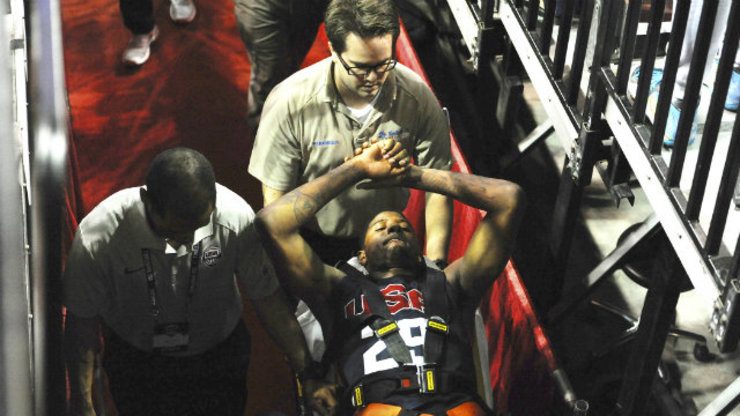
This had actually prompted former NBA commissioner David Stern, who was just inducted to the Hall of Fame over the weekend, to push on behalf of the owners a proposal to restrict participation in the Olympics or World Cup to players who are 23 years or younger. This is just like it’s done in men’s Olympic soccer, and Stern made the proposal shortly before the 2012 London Olympics to afford the league’s biggest stars a chance to take a breather and lessen the possibility if injuries. But the proposal didn’t go far.
Cuban of course has railed against NBA players’ being exposed to the rigors of international play without any tangible benefits. “The (International Olympic Committee) is playing the NBA,” the feisty Mavericks owner says. “The IOC is an organization that has been rife with corruption, to the point where a member was accused of trying to fix an Olympic event in Salt Lake. The IOC (pulls in) billions of dollars. They make a killing and make Tony Soprano look like a saint. The greatest trick ever played was the IOC convincing the world that the Olympics were about patriotism and national pride instead of money. The players and owners should get together and create our own World Cup of Basketball.”
But while Cuban has found a rallying point in George’s ghastly injury, he still may belong to the minority. Indiana Pacers president Larry Bird, who will start paying George his five-year, $92 million contract this coming season, a season that he ironically will probably have to sit out, has, for example, chosen to take the high road.
“There is no question about the impact on our team but our goal is to be as strong-willed and determined as Paul will be in coming back,” the legendary former Boston Celtic said shortly after George was hurt and subsequently underwent a successful operation. “Our franchise has had setbacks in its history but has demonstrated the abilities to recover. Paul will provide the example of that off the court and it is up to the rest of us to provide that example on the court. Our focus is solely on Paul and doing whatever we can to help.
“We still support USA Basketball and believe in the NBA’s goals of exposing our game, our teams and players worldwide,” Bird concluded in a telling declaration of his support of the status quo. “This is an extremely unfortunate injury that occurred on a highly-visible stage, but could have also occurred anytime, anywhere.”
Many quarters no doubt share in Larry’s positive take, no matter the gravity of the misfortune that befell George and his Pacers squad.
NBA commissioner Adam Silver, who will nonetheless likely take the situation up in forthcoming league meetings, says, “I don’t anticipate a major shift in the NBA’s participation in international competitions. Of course, there’s no doubt that this will be a hot topic at our next NBA Competition meeting in September and our Board of Governors’ meeting in October and we will continue to evaluate the pros and cons of participating in international tournaments. Basketball has unquestionably taken incredible strides since 1992 when NBA players began playing in the Olympics, not to mention, the jump many of our players have made in terms of ability, leadership and passion for the game by playing for their home countries. Injuries can happen any place at any time. The experiences our players have enjoyed by participating in their national teams, however, are ones that are unique and special in almost every other way.
“Our goal is to make basketball the No. 1 sport in the world,” Silver continues. “This is not going to happen unless governments around the world continue to back basketball as a healthy way for their youth to become physically fit and to learn important values like discipline and teamwork. Basketball is a sport of choice internationally because of the ease of participation, its universality and the fact that it’s been an Olympic sport for nearly 80 years.”
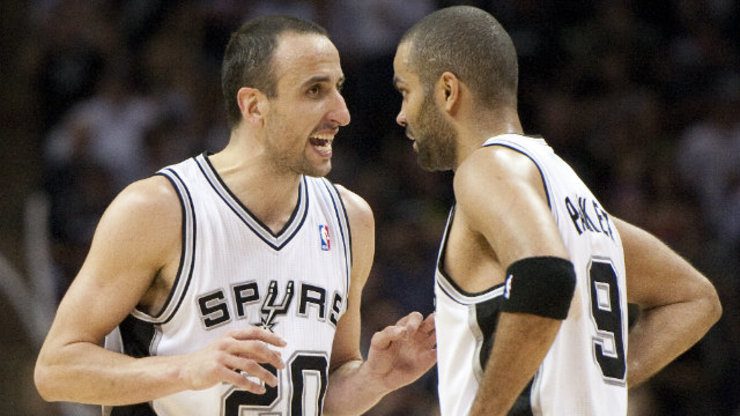
One case that can be made supporting the continued participation of NBA stars in international tournaments is the fact that George’s impending season loss would be the first in USA Basketball history since professionals started playing internationally with the mythical Dream Team 22 years ago. The fact that it has also been used as springboard by many NBA stars to ultimately become the players that they eventually did can’t also be ignored easily. Charles Barkley topscored for the Dream Team in the 1992 Barcelona Games, and he became the NBA MVP the following season. Durant also admitted that his experience in the 2010 World Championship was instrumental in the growth of his already remarkable game. And Derrick Rose, who has suffered through two major knee injuries the past two seasons, has used this ongoing stint with Team USA as his coming-out party for a strong comeback in the NBA.
Many people have also pointed out that for all the outcry that George’s injury sparked, seemingly lost is what Bird himself so realistically declared about injuries possibly happening in whatever setting an NBA player may find himself in. It’s almost second nature for NBA players to play any place where the urge hits them, or whether they do it for a living or for fun, whether for charity (though they did not play for it in Manila, wink-wink) or plain pickup games at their old college gyms or the playgrounds.
“George’s injury could have happened in any of those settings just as easily as it did in Friday’s scrimmage,” Phil Taylor of Sports Illustrated puts it in perspective. “It’s true that NBA stars are paid millions and are valuable commodities to their teams, but unless you want to lock them up in velvet cases once the season ends, there is no way to eliminate the risk of offseason injury… There is value in representing one’s country that can’t be quantified, and the fact that George was injured while wearing USA on his chest rather than Pacers shouldn’t make anyone think that it was a greater shame because the scrimmage was ‘meaningless.’ George was representing his country, and that’s not a waste of time. In fact, the inherent risk is part of what makes it meaningful.”
Cuban’s beef, while purportedly concerned with the players’ physical state, also seems to be premised on the money issue, as he implied in saying that the NBA allowing its players to play for free for corporate America so the US Olympic Committee can make billions of dollars is “stupid.” In that case, this becomes more hypocritical on Cuban’s part and can just as soon be remedied by a lucrative TV contract the league will likely negotiate with the FIBA. This could come when the FIBA holds its next World Cup of Basketball in 2019, when the tournament starts to move out of football’s World Cup cycle.
CBSSports.com’s Ken Berger put it best when he said, “The answer isn’t pulling the biggest stars from international play, because what the Dream Team started in 1992 has made money for owners and players and made the NBA’s biggest stars global celebrities. It’s easy to lose sight of that, but we shouldn’t.”
Amen, we say to that.
What should be done
More than the participation of NBA players, the league should look into the playing conditions of facilities where Team USA holds its practices and scrimmages. The stanchion at the University of Nevada-Las Vegas’ Thomas and Mack Center, where Paul George jammed his right foot and caused two breaks (one each in his right tibia and fibula), was found to be three feet, 11 inches from the baseline, but that’s only one inch short of the prescribed NBA standard of four feet.
The NBA requirement seems to have been outgrown by current-day players as many arenas around the league have left much wider space than that. Today’s players are simply too big, too fast and too athletic and they need more space to land, gather themselves and reverse direction after jumping at full speed.
The NBA should also look into potential occupational hazards, like photographers who sit courtside and near the baseline and other danger zones that might put players at risk when they come running at full speed.
But grieve not for George, the very first player to have suffered a serious injury while playing for the US. The son-in-law of my younger brother Tony, Mhike de Chavez Tarrubal who is a licensed nurse in Canada and a former medical instructor, gave an encouraging prognosis on George’s injury.
Mhike says: “The greatest hurdle for PG will be mental. His bone will be stronger after healing plus it will be reinforced with some kind of metal plating, that is, barring other issues like potential infection. This will heal eventually. But getting that first step of trusting your rehab and yourself to jump and land on that leg again, that’s difficult. I’ve read as well that there was no other serious coincidental damage to the leg. It wasn’t a Shaun Livingston injury where ligaments and tendons had to be repaired. His (Livingston’s) was worse but he came back.”
SHORTSHOTS: :)Kelly Olynyk of the Boston Celtics also had his right foot jammed while playing for Canada’s national team, but only in an endline billboard and was not hurt as seriously as Paul George… San Antonio has ensured Tony Parker will be in Spurs black and gray when the reigning champions signed him to a three-year contract extension worth $43 million… Former NBA commissioner David Stern and All-Stars Alonzo Mourning of Miami and Mitch Richmond of Sacramento and Golden State led a group of 10 who were inducted into the Basketball Hall of Fame last August 8. The other inductees are former NCAA champion coaches Nolan Richardson of Arkansas and Gary Williams of Maryland, Immaculata University’s AIAW team that won three straight national championships from 1972 to 1974, former coach Bob Leonard of the ABA Indiana Pacers, the late former New York Knick Nat “Sweetwater” Clifton, former Lithuanian star Sarunas Marciulionis, and the late ex-Philadelphia/San Francisco Warriors All-Star Guy Rodgers. – Rappler.com
Bert A. Ramirez has been a freelance sportswriter/columnist since the ’80s, writing mostly about the NBA and once serving as consultant and editor for Tower Sports Magazine, the longest-running locally published NBA magazine, from 1999 to 2008. He has also written columns and articles for such publications as Malaya, Sports Digest, Winners Sports Weekly, Pro Guide, Sports Weekly, Sports Flash, Sports World, Basketball Weekly and the FIBA’s International Basketball, and currently writes a sports column for QC Metro Manila Life and, until this summer, a weekly blog for BostonSports Desk. A former corporate manager, Bert has breathed, drunk and slept sports most of his life.
Add a comment
How does this make you feel?
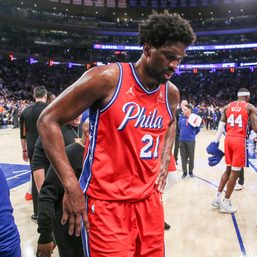
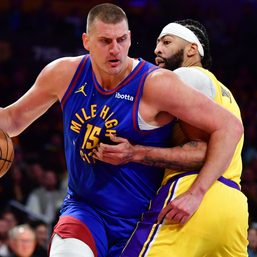

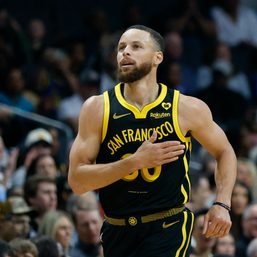
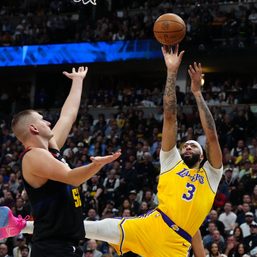
There are no comments yet. Add your comment to start the conversation.